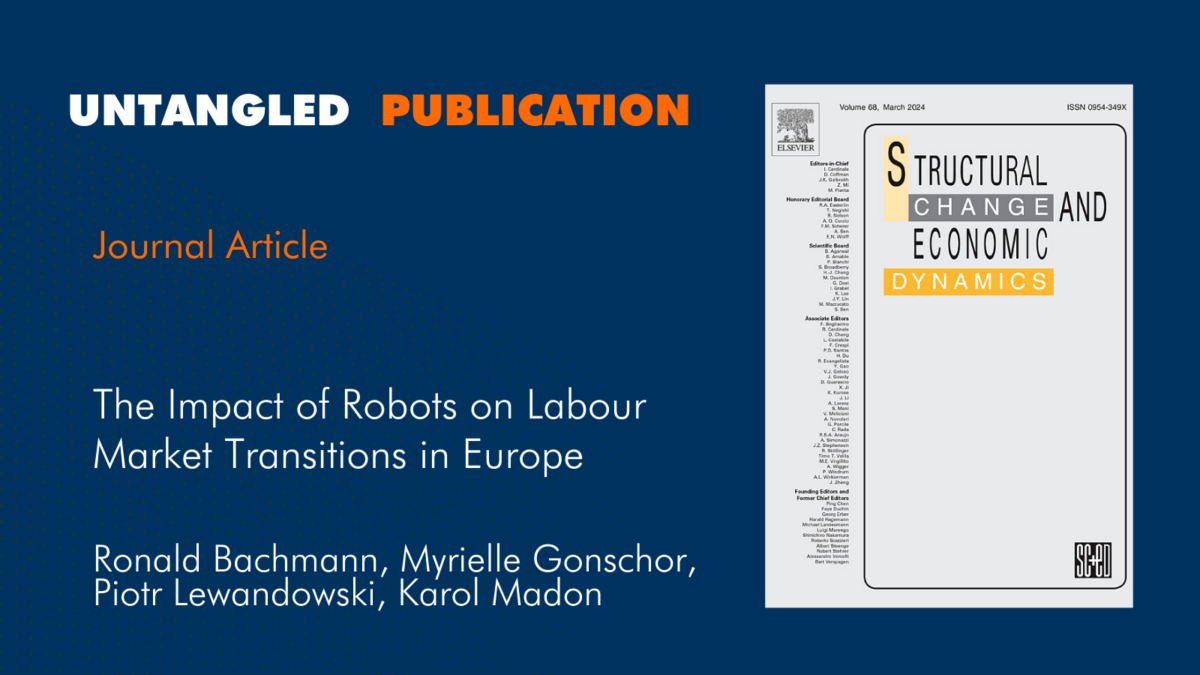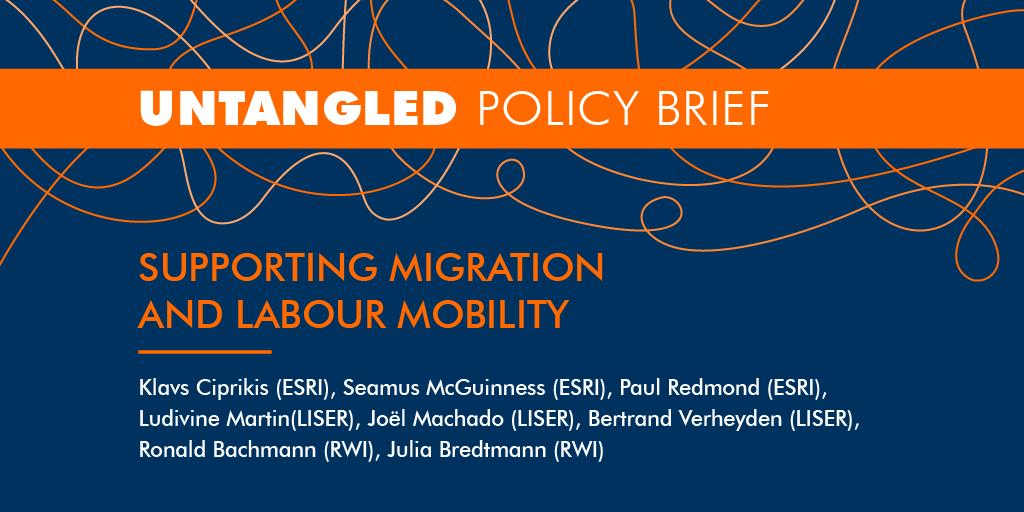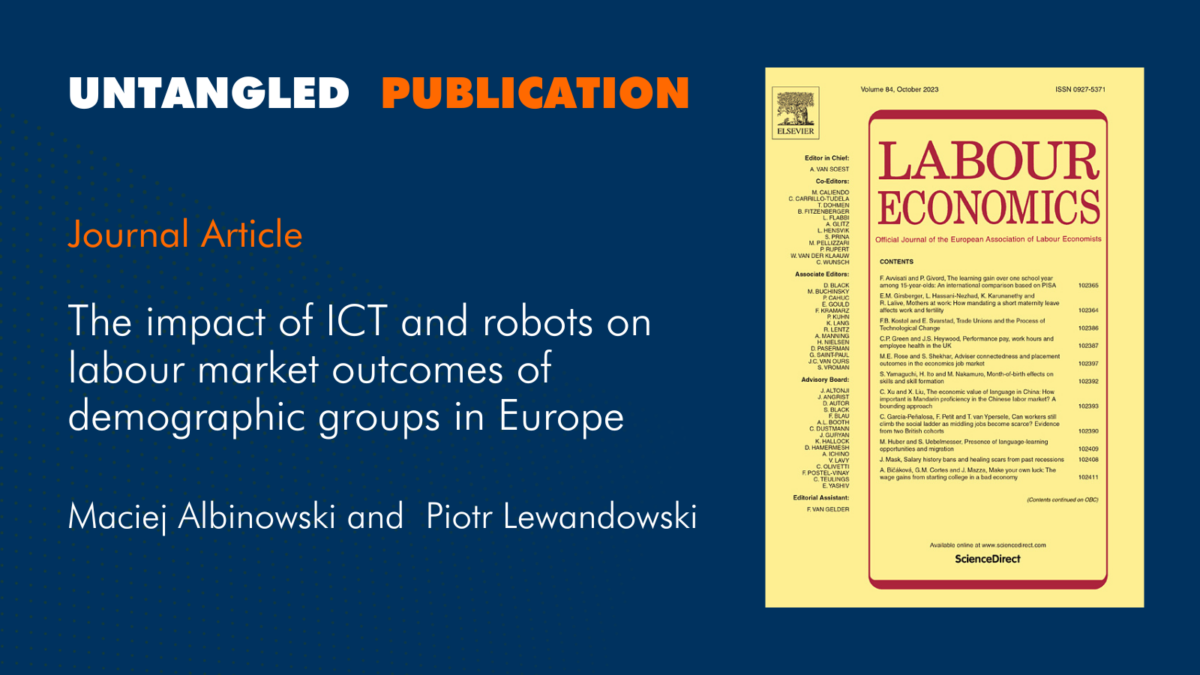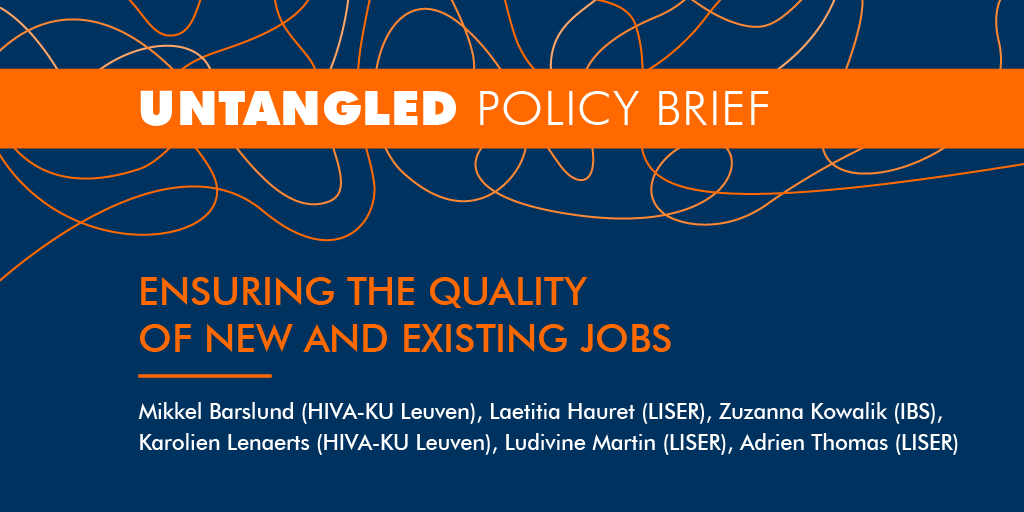In the policy brief: ‘Ensuring the quality of new and existing jobs’, researchers from the three-year project looked into recent policy proposals aiming to enhance both work and life quality and the delicate balance between them. Drawing on findings from Project UNTANGLED, expert consultations, and stakeholder inputs, they identify areas of policy that can be improved or need further consideration.
“While labour markets in the EU are doing well, technological advances and demographic changes will affect not only the number but also the quality of jobs in the coming years,” said Mikkel Barslund, UNTANGLED project coordinator and research manager at HIVA-KU Leuven, who co-authored the policy brief. “We need to ensure that the policies we are implementing now will contribute to shared prosperity.”
The COVID-19 crisis accelerated the adoption of working-from-home, praised by many for fostering employee autonomy, reducing work pressure, and increasing work effort. However, with the surge in teleworking, the drawbacks have become more apparent, including hindering team collaboration, triggering feelings of isolation, and extending working hours. Furthermore, the fact that not all workers can perform their tasks from home worsens working workplace relations and creates inequality. To address these challenges, UNTANGLED researchers argue that employers and employees should discuss and agree on the optimal number of teleworking days and workplace rules.
Digitalisation and teleworking have also blurred the lines between home and work life, prompting employees to respond to calls, texts, and emails at all hours. Several EU countries have implemented or are considering legislation safeguarding the “right to disconnect” to prevent burnout and help workers re-establish work-life balance. Yet, Ludivine Martin, a researcher at the Luxembourg Institute of Socio-Economic Research (LISER), part of the UNTANGLED consortium, cautions against one-size-fits-all solutions, such as blocking server usage during weekends, and emphasises the need for tailored strategies that take into account sector, occupational, and technological nuances of work outside regular hours.
Another technological development, the emergence of platforms such as Uber, Deliveroo and Bolt, has given rise to new forms of work that are organised and regulated in new ways. Platform workers, representing around 5% of employees, are exposed to limited labour protections, predominantly low and irregular income, and lack of control over working conditions. Due to their relatively new status, unregulated nature, and fast development, platform jobs create challenges that policymakers are now trying to address at the EU and national levels. The UNTANGLED researchers argue that in addition to regulating their legal employment status, granting platform workers collective bargaining rights is also crucial for improving their well-being, social protection and fair working conditions.
“Many challenges in regulating platform work arise from its uncertain legal status and varied regulations across countries,” said co-author Adrien Thomas, a researcher at the LISER. “Governments and the EU have to define the status of platform workers and whether they should be considered employees or independent workers. Digital platform companies often position themselves as mere ‘intermediaries’ between service providers and clients, aiming to evade the responsibilities of an employer.”
Last month the EU reached a provisional agreement on the Platform Work Directive, which aims to ensure the correct classification of platform workers’ employment status. The new rules introduce a presumption of an employment relationship, and still need to be adopted by both the European Parliament and the Council to enter into force.
At the same time as workers, companies and governments are wrestling with the implications of these new technologies, the ageing population is becoming a major challenge for labour markets, increasing the demand for health and long-term care (LTC) workers. Many EU member states are already grappling with significant labour shortages in these sectors, marked by low pay, high turnover, and poor working conditions. LTC workers are particularly exposed to a lack of full-time work.
Urging prompt government action, the UNTANGLED researchers propose policies to attract and retain workers in the health and LTC sectors, including raising wages, improving working conditions, and increasing staffing ratios to lighten workloads. Governments could also use their influence to encourage private facilities that receive public funds to adhere to collective bargaining agreements or meet higher job-quality standards, such as minimum wages. Policymakers should also explore strategies for attracting migrant workers, including programmes that help integrate foreign workers into local systems and re-evaluating qualifications and language requirements, the researchers said.
Barslund, M. et al. (2023). UNTANGLED Policy brief: Ensuring the quality of new and existing jobs (Deliverable 7.2) Leuven: UNTANGLED project 1001004776 – H2020.
You can read the policy brief here.













